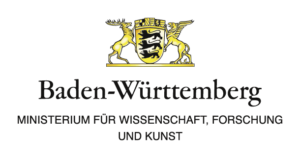Are there in the Czech Republic any archaeological finds from caves? And if there are, where are they? From which period are most of the finds and where are the most important sites?
At present in Czechia we know of 200 archaeological site in caves, below overhanging rocks and in gorges, Most of the sites were discovered in the karst areas: mostly in the Bohemian Karst (Central Bohemia, south-west from Prague), Moravian Karst (Central Moravia) and Štramberk Karst (Northern Moravia). The use of caves and to lesser extent gorges is more common to karst areas. In recent years many sites have also been discovered in the sandstone areas of the northern part of Bohemia (Labské pískovce, Česká Lípa region, region of Kokořín, Bohemian Paradise). The use of overhangs is more typical for these areas.
The earliest finds are from the middle Palaeolithic. For example Turské Maštale in the Bohemian Karst, Kůlna and Švédův stůl in the Moravian Karst and Šipka in the Štramberk Karst. The bones of Homo Neanderthalensis have been found in the three last named caves.
Many finds are from the Upper Palaeolithic, in the Bohemian Karst there are for example the Koněpruské caves with finds of human bones or the Děravá cave with the find of an engraving of an ibex on a slate plate. In the Moravian Karst it is the Pekárna cave with many engravings on bone artefacts. Most of the Mesolithic finds are from the sandstone ovehangs from the northern part of Bohemia.
In the periods of farming cultures, caves were most often used during the Neolithic (5,500–4,300 BC), the Late Bronze Age (1,400–750 BC) and the Early Iron Age (the 8th to the 5th century BC). The richest archaeological site is Býčí skála in the Moravian Karst. It is probably the remains of a temple from the 7th to 5th century BC. In the cave were found many ceramic and bronze vessels, bronze, amber, glass and gold ornaments, bronze and iron weapons, iron tools (for example equipment for a smithy and the remains of a cart), bones of animals (horses, pigs) and the remains of more than 40 people.
Read more:
Fridrich, J./Sklenář, K. 1976: Die paläolithische und mesolithische Höhlenbesiedlung des Böhmischen Karstes. Fontes archaeologici Pragenses 16. Praha: Národní museum.
Sklenář, K./Matoušek, V. 1994: Die Höhlenbesiedlung des Böhmischen Karstes vom Neolithikum bis zum Mittelalter. Fontes Archaeologici Pragenses 20. Praha: Národní muzeum.
Svoboda, J./Jarošová, L./Drozdová, E. 2000: The North Bohemian Mesolithic revisited: the excavation seasons 1998–1999, Anthropologie 38/3, 291–305.
This question was answered by:
Václav Matoušek, Faculty of Humanities, Charles University Prague (CZ)
Nacházejí se na území České republiky archeologické nálezy v jeskyních? Pokud ano, kde, z jakých období je nejvíce nálezů a kde jsou nejvýznamnější naleziště?
Na území České republiky je v současné době známo na 200 archeologických nalezišť v jeskyních, pod skalními převisy a v propastech. Nejvíce nalezišť bylo dosud objeveno v krasových oblastech: především v Českém krasu (střední Čechy, jihozápadně od Prahy), v Moravském krasu (jižní Morava, severně od Brna), v menší míře v Mladečském krasu (střední Morava) a ve Štramberském krasu (severní Morava). Pro krasové oblasti bylo charakteristické využívání jeskyní a v menší míře nálezy v propastech. V posledních letech bylo objeveno velké množství nalezišť rovněž v pískovcových oblastech severní poloviny Čech (Labské pískovce, Českolipsko, Kokořínsko a Český ráj). Pro pískovcové oblasti bylo charakteristické především využívání převisů.
Nejstarší nálezy pocházejí ze středního paleolitu. Např. Turské maštale v Českém krasu, Kůlna a Švédův stůl v Moravském krasu nebo Šipka ve Štramberském krasu. V posledních třech jeskyních byly objeveny mimo jiné i kosti neandertálců.
Velké množství nálezů pochází z mladšího paleolitu. V Českém krasu např. Koněpruské jeskyně s nálezy lidských kostí nebo Děravá jeskyně s nálezem rytiny kozorožce na břidlicové destičce. V Moravském krasu především jeskyně Pekárna s množstvím rytin na kostěných předmětech. Největší množství mezolitických nálezů je známo z pískovcových převisů v severní polovině Čech.
V epoše zemědělských pravěkých kultur byly jeskyně nejčastěji využívány v neolitu (5.500–4.300 př. n. l.), v mladší a pozdní době bronzové (1.400–750 př. n. l.) a ve starší době železné (8.–5. století př. n. l.). Nejbohatším archeologickým nalezištěm je Býčí skála v Moravském krasu. Jedná se pravděpodobně o pozůstatek svatyně ze 7.–5. století př. n. l. V jeskyni bylo objeveno množství keramických a bronzových nádob, bronzové, jantarové, skleněné a zlaté ozdoby, bronzové a železné zbraně, železné nástroje (např. výbava kovářské dílny a pozůstatky vozu), kosti zvířat (koně, prasata) a pozůstatky více než 40 lidí.
Výběr z obsáhlé literatury:
Fridrich, J./Sklenář, K. 1976: Die paläolithische und mesolithische Höhlenbesiedlung des Böhmischen Karstes. Fontes archaeologici Pragenses 16. Praha: Národní museum.
Sklenář, K./Matoušek, V. 1994: Die Höhlenbesiedlung des Böhmischen Karstes vom Neolithikum bis zum Mittelalter. Fontes Archaeologici Pragenses 20. Praha: Národní muzeum.
Svoboda, J./Jarošová, L./Drozdová, E. 2000: The North Bohemian Mesolithic revisited: the excavation seasons 1998–1999, Anthropologie 38/3, 291–305.
Václav Matoušek, Faculty of Humanities, Charles University Prague (CZ)






